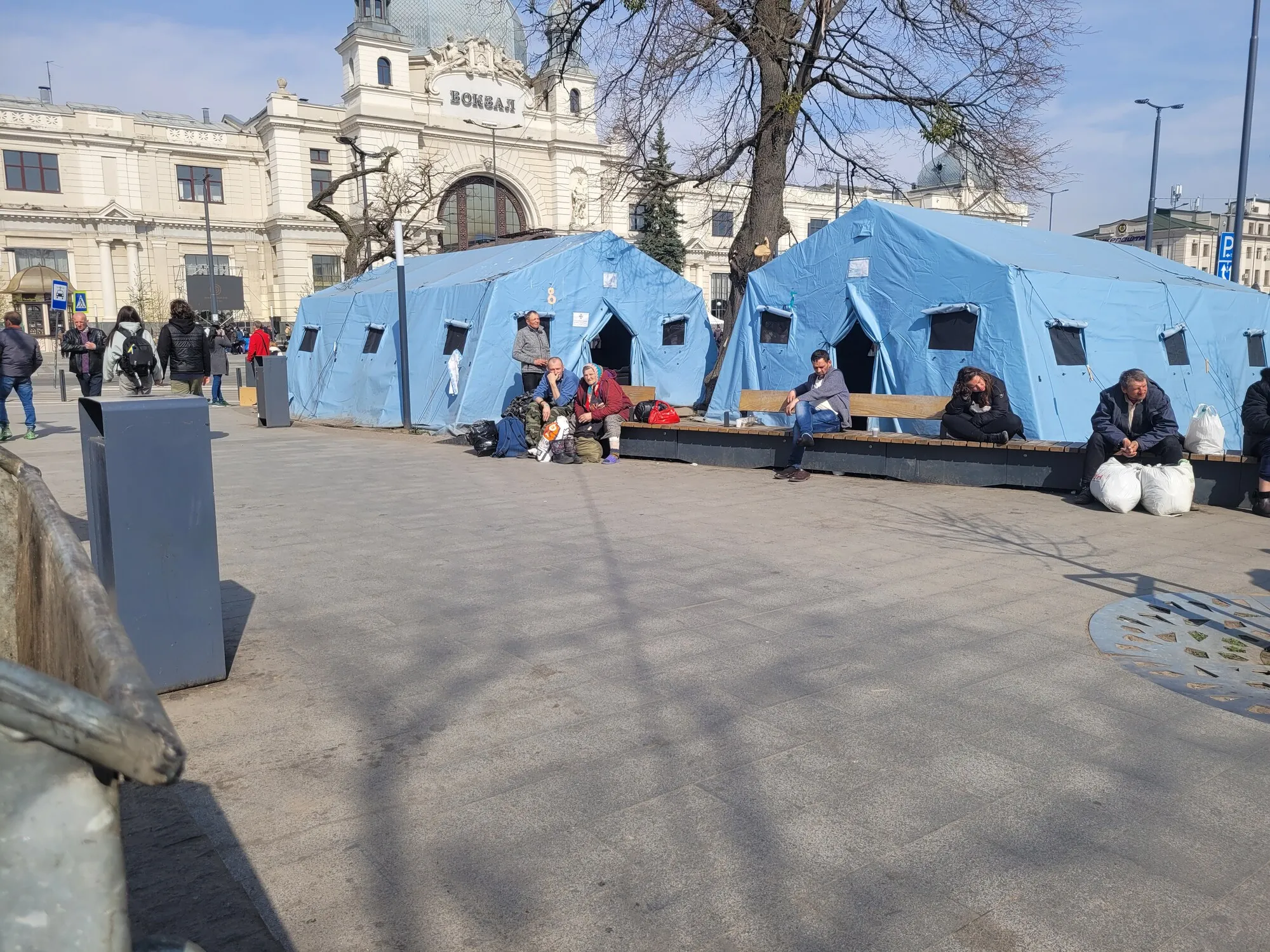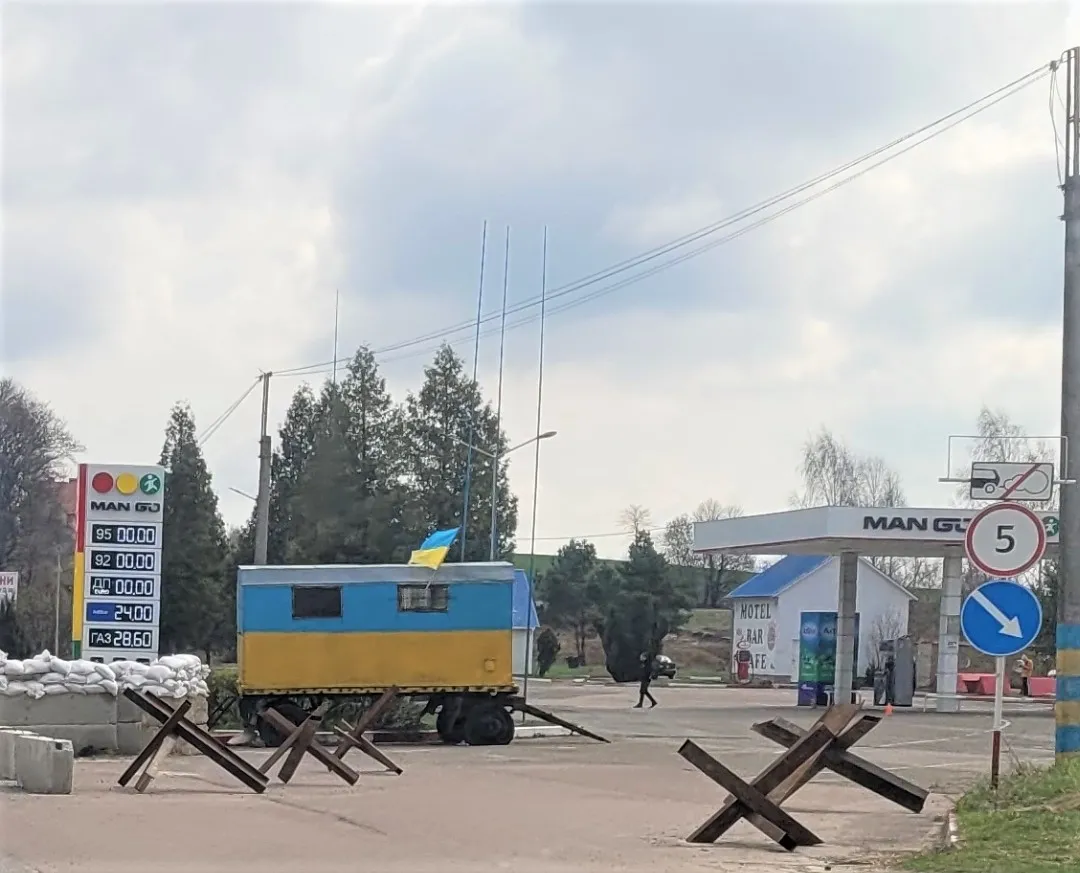In the Ukrainian capital Kyiv, the picture is different. Officially, Kyiv has about 3.5 million inhabitants, but since the beginning of the war the city’s population has been cut in half.
Kyiv presents a marked contrast with its neighbor, which is – for now – out of the conflict zone. In Lviv streets are busy and crowded, with people visiting parks and cafés, shopping, and walking their dogs. In Kyiv only a few pedestrians are spotted, hurriedly stepping to their destinations. A trailer has “hell” written on it in Ukrainian. Statues and monuments are protected with sandbags. Many of the houses and apartments are empty.


